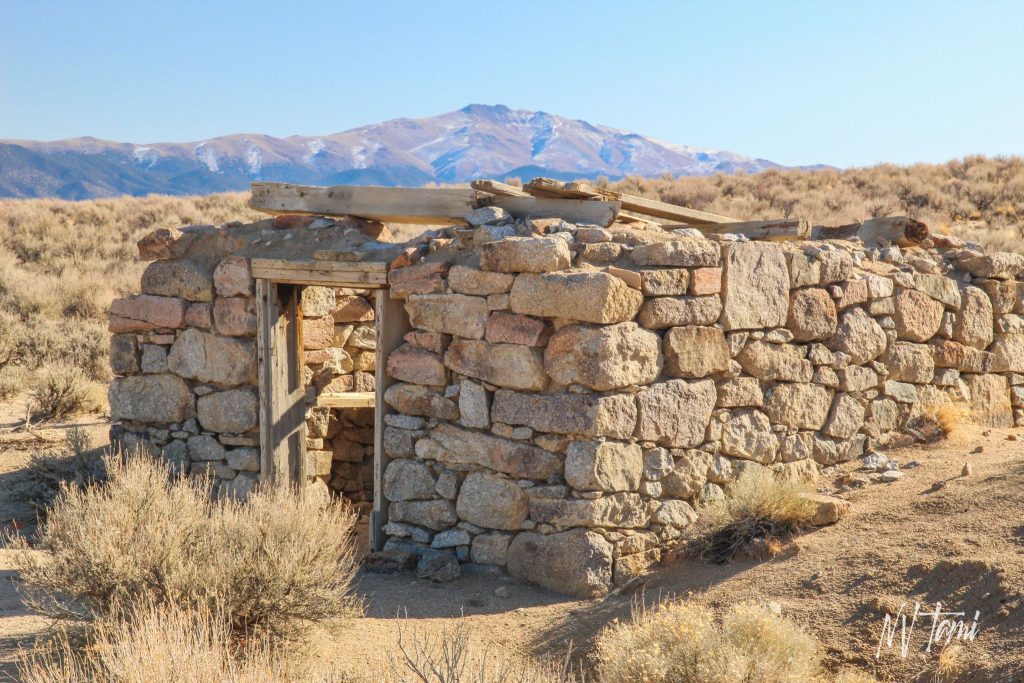
Now a ghost town, Cambridge played an essential role in mining in the Pine Grove District. The Walker River’s waters provided the needed resources for milling the district’s ore. Multiple mills, including a rare Huntington Mill, were used along the East Walker River.
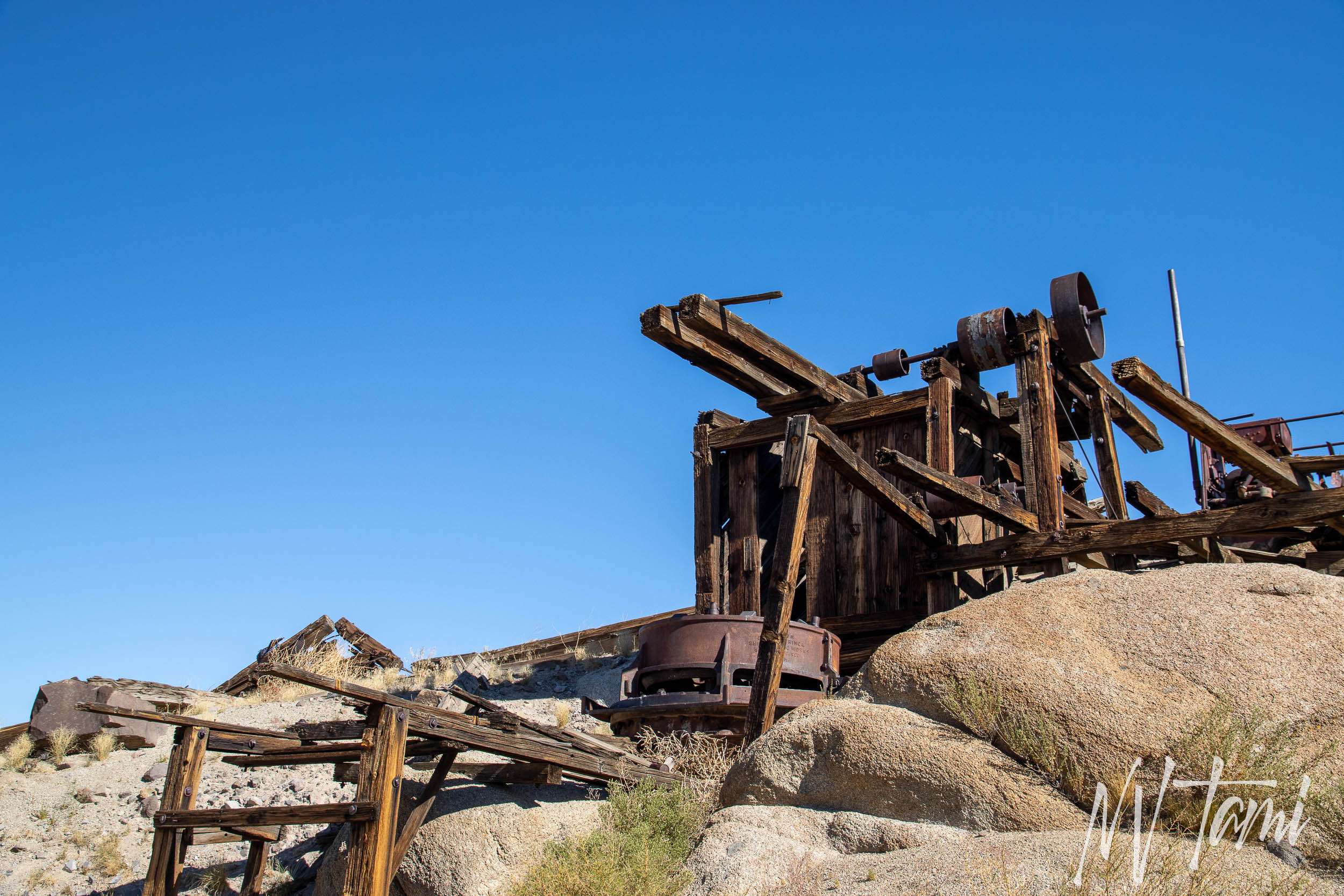
C.D. Lane and his family prospected and milled along the East Walker River at Cambridge. Tragically, they had to bury their first child, Frankie near their mill. Marking Frankie’s grave was a journey that covered two decades and hundreds of miles.
Cambridge Mining District

Prospectors discovered gold in 1861 in the Cambridge Hills east of Pine Grove Flats. They formed the Wilson-Cambridge Mining District, which eventually contained over 500 mining claims. Primary commodities included gold, silver and, more recently, uranium.
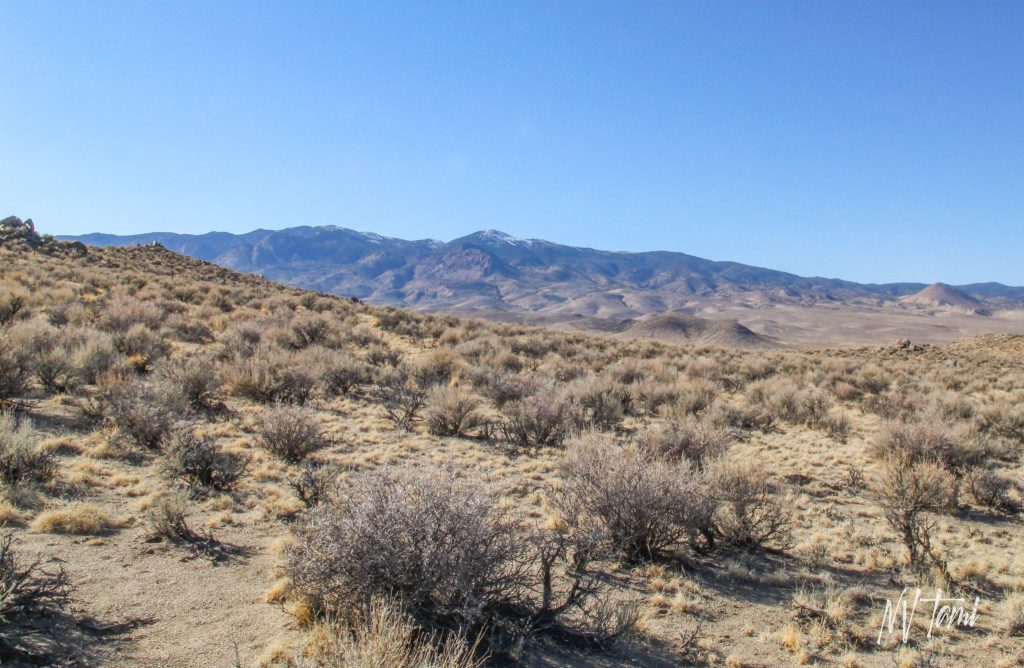
An accounting report by Mr. Rink in 1966 said Mr. Blaisdell (sic), an early governor of Nevada, worked in Cambridge in the 1850s. The report states Blaisdell dug a 250′ shaft and milled the ore on-site with a hydro-powered stamp mill, selling his mine in the 1860s. *See the author’s note at the bottom of the article.

(Photo credit: Wikipedia)
The mining districts on the East Walker River were known by several names, including Cambridge, Wilson, Pine Grove, Rockland and Washington. Multiple mills processed local ore along the East Walker River. Below are some of the mills referenced in period newspapers
- 1861 Welburn & Van Horn quartz mill and arrastra
- 1867 Brooks Mill
- 1867 Colonel Todman, Captains Pray, Cheever and Blasdel steam-powered 10-stamp mill
- 1867 Wheeler & Penrond, multiple arrastras
- 1867 Dall’s Mill in the Washington district
- 1879 “Ex-Governor Blaisdel” water-powered mill 100 hp
- 1883 Thompson 2-stamp quartz mill known as Thompson’s Mill (another reference puts Thompson Mill on West Fork)
- 1891 and 1896, Mr. Gignoux’s Small mill on his ranch, which was the old Blaisdel property
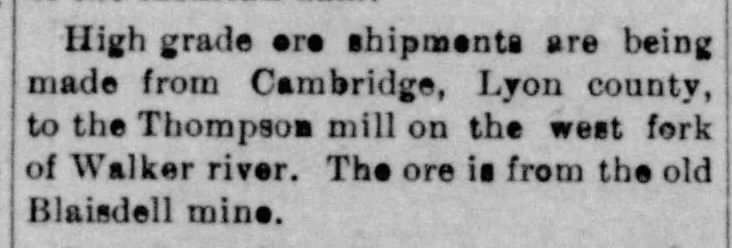
Winnemucca, Nevada · Wednesday, May 31, 1899
In 1879, former Governor Bladsel purchased mill equipment from the Union Iron Works outside of Virginia City for a mill operated by Cambridge Mill and Mining Company based in Esmerelda County. The mill was to be 10-stamps with a 100-horse power turbine wheel. It was thought the district would show “real merit.”

1891 J. E. Gignoux worked the Bladsel old mines along the Walker River. Working the ore at a small mill on the river of his ranch, he found free gold thought to be worth several hundred dollars to the ton. In September 1891, The Walker Lake Bulletin pronounced, “It is liable to prove a very valuable mine.” Mining decreased in 1893 after the demonetization of silver.
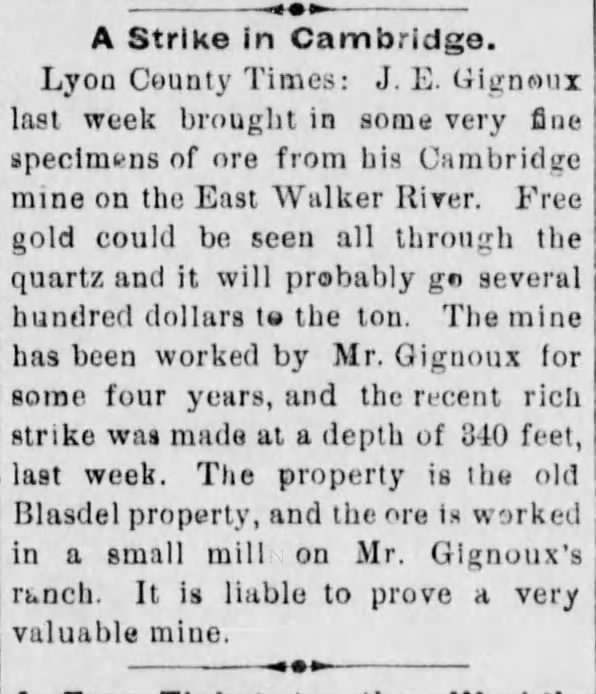
Hawthorne, Nevada · Wednesday, September 09, 1891
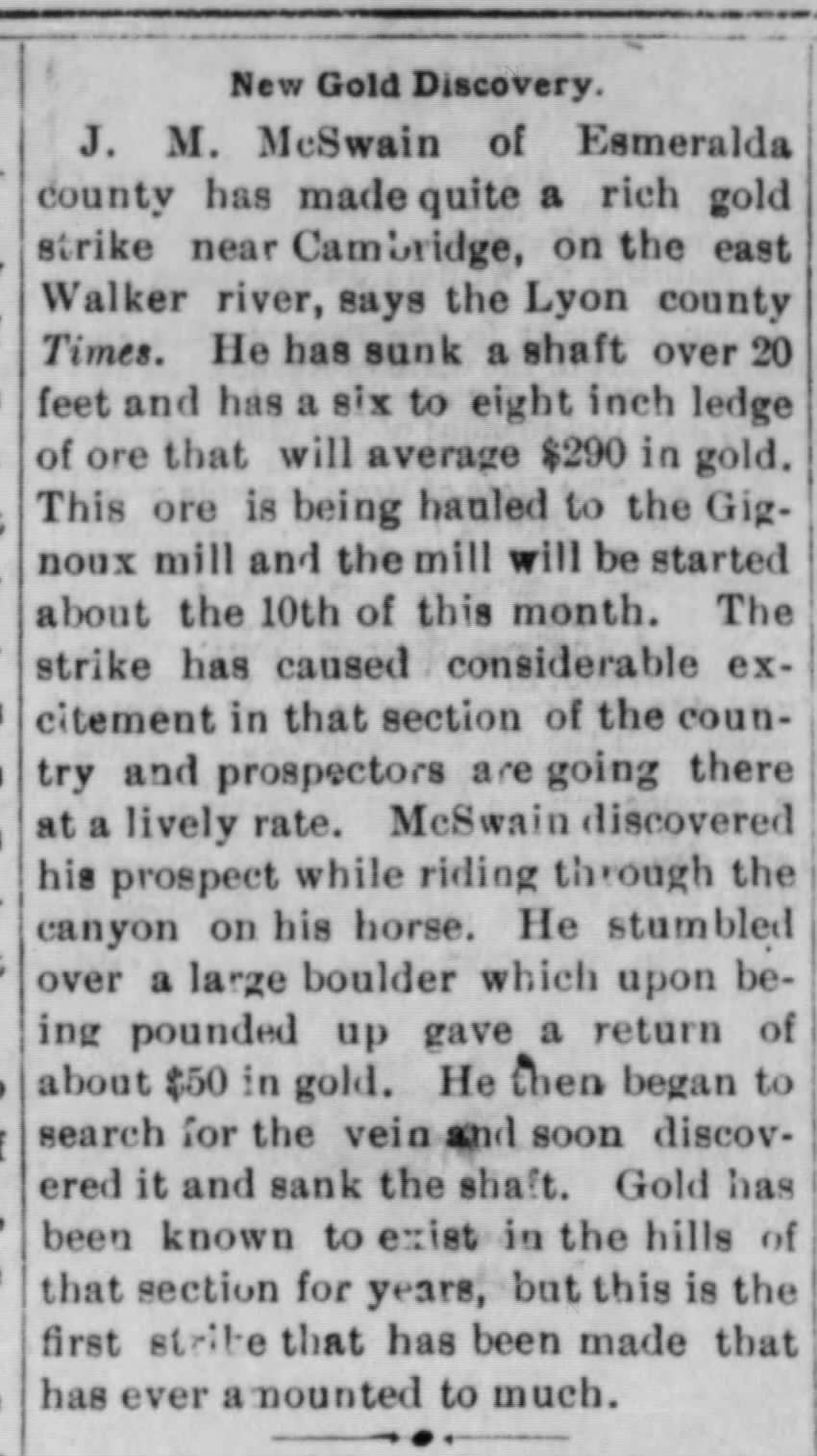
Winnemucca, Nevada · Monday, April 06, 1896
In 1901 F. L. Winters purchased a half interest in the J.W. Farrles mine in Cambridge. He added hoisting works and expanded the mine to 500′.
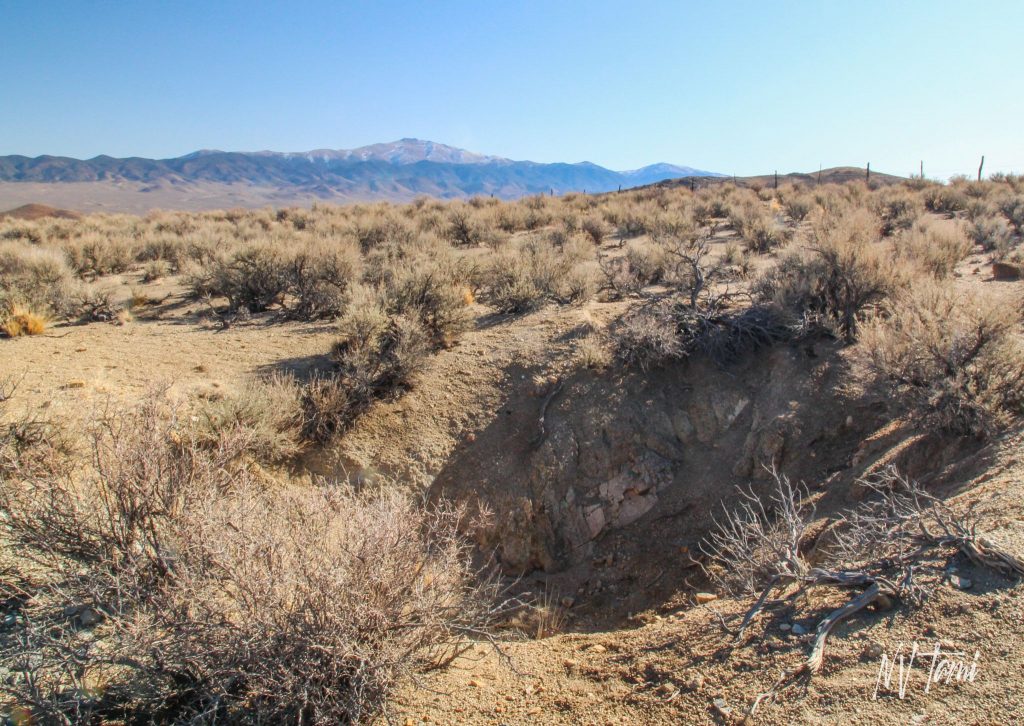
Several revivals occurred, including in 1936, when a mill was again processing local ore. In 1940, Visalia California Associated purchased the claims, starting Cambridge Mining Incorporated. They constructed a mill at the diversion to protect their 1865 water rights.
Cambridge
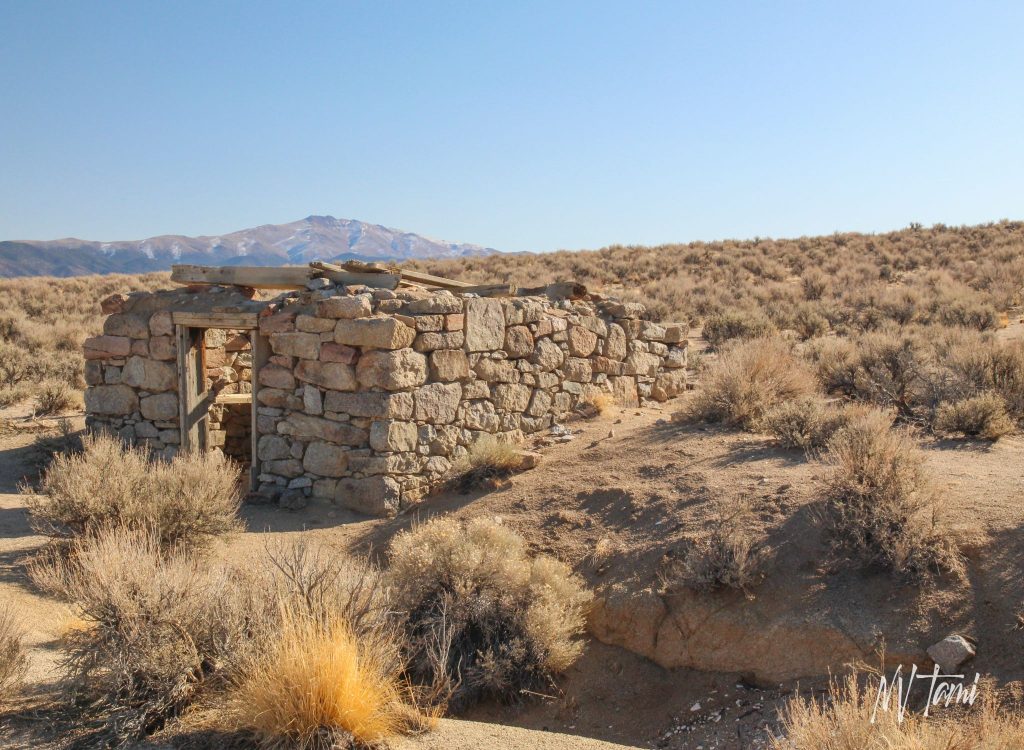
Cambridge had a settlement large enough for a post between 1879 and 1881. The Cambridge district had a voting precinct until the 1956 elections, but the population was dispersed. Little is documented about the town itself. Residents likely secured services in Pine Grove, the regional supply center.

(Historical photo credit: Wikipedia)
The Lane Family in Cambridge
Charles David Lane, known as C.D. or Charlie, was born November 15, 1840, in Palmyra, Missouri and Anna Garrard, born February 1845, emigrated with their families to California as part of the Duckwall—Trahern party. They settled in Knights Ferry. C.D’s father owned Lane’s Hot Springs, which drew visitors from as far away as San Fransisco.

(Photo credit: Library of Congress)
Rather than running his father’s business, legendary mining promises in the Silver State attracted C.D., and he relocated to Nevada in 1861. Knowing the Comstock was overfilled, he prospected the Cambridge Hills south of Mason Valley. He quickly became an important man in Mason Valley, ranching and hauling wagon teams to Sacramento, Virginia City, Austin, Aurora and Pine Grove. The following year, he constructed the Lane—Johnson water ditch, likely with labor from China.

On June 15, 1864, C.D. married Anna Garrard, who had emigrated with his wagon party to California. The couple married in Calaveras County, California, and then C.D. brought his bride to Nevada.
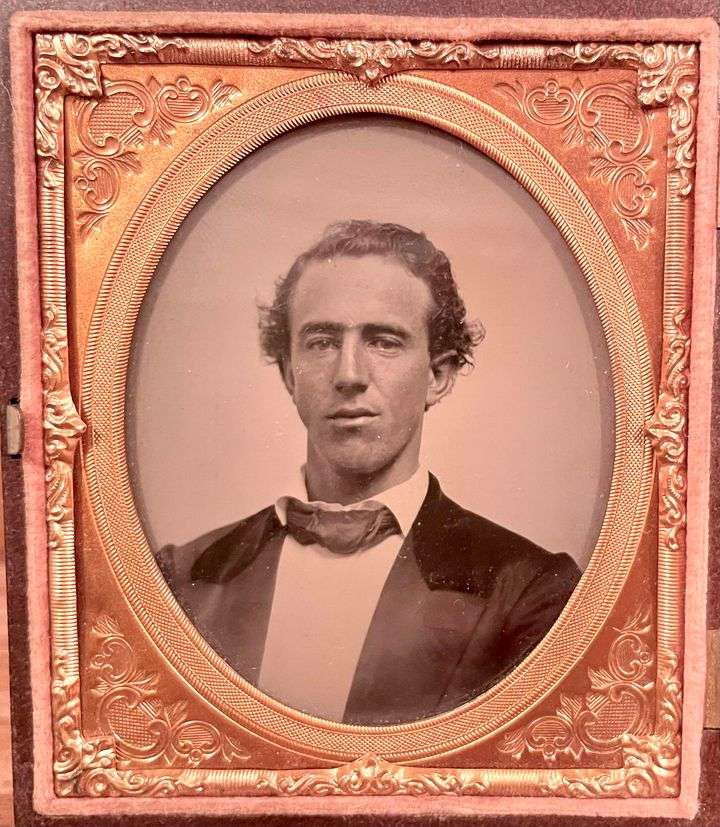
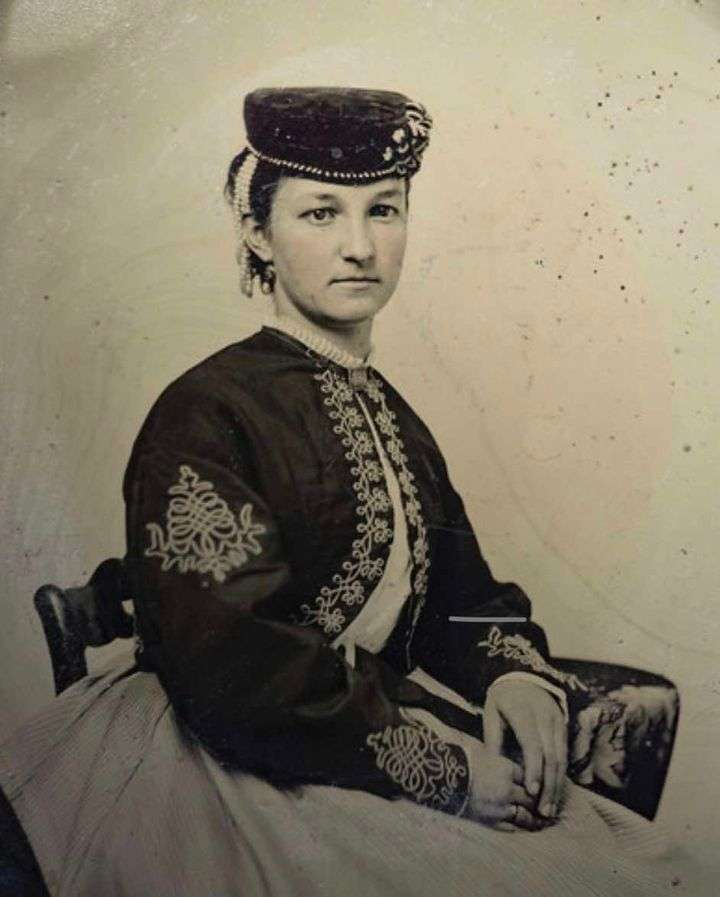
(Photos courtesy of the Lane Family)
The Lane’s first child, Frank “Frankie” Garrard, was born on August 28, 1865. Their second child, Thomas Travis Lane, was born May 3, 1869.
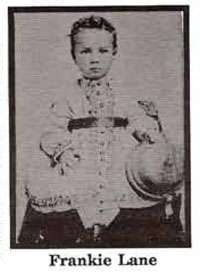
(Photo courtesy of the Lane Family)
In January of 1870, 4.5-year-old Frankie developed a sudden illness. Tragically, he died on January 21, 1870. The family buried him near their mill on the East Walker River. That November, Anna gave birth to Ila Eulalia at their home on the river. Their fourth child, Paul, was born on October 13, 1872. Louis Leon rounded out the family on May 19, 1879.

(Photos courtesy of the Lane Family)
C.D. worked on his claims for two years. All his hard work was for naught. In the end, he had to borrow money from rancher George Webster to feed his growing family. Neighbor Elijah Beaman owned the Cambridge mine two miles from Lane’s mill. His profits allowed him to purchase a ranch in Mason Valley.

(Photo credit: Las Calaveras)

Following the heartbreak of losing Frankie and being unable to make a living at their Cambridge mill, C.D. and Anna loaded up the family in a wagon. They headed first to Battle Mountain and later to Eureka, then Idaho. As the Lane family moved around, C.D. learned all aspects of mining and milling.

(Photo Credit: Calaveras History)
C.D. became a famous mining magnate, owning the famed Utica Mine in Angels Camp, California. Instead of their tent on the East Walker River, they lived in the beautiful Utica Mansion.

(Photo Credit: Calaveras History)
Decades later, C.D. and Anna still thought of little Frankie, who they left buried alongside the East Walker River. After 20 years, C.D. paid his debt to George Webster, plus interest. The Lanes contacted their old friend, Elijah Beaman, now a successful rancher.
Gone Before
Frank G. Lane
Born Aug. 28, 1865
Died Jan. 21, 1870
Frankies headstone. (The family has asked not to use any close ups of the headstone.)
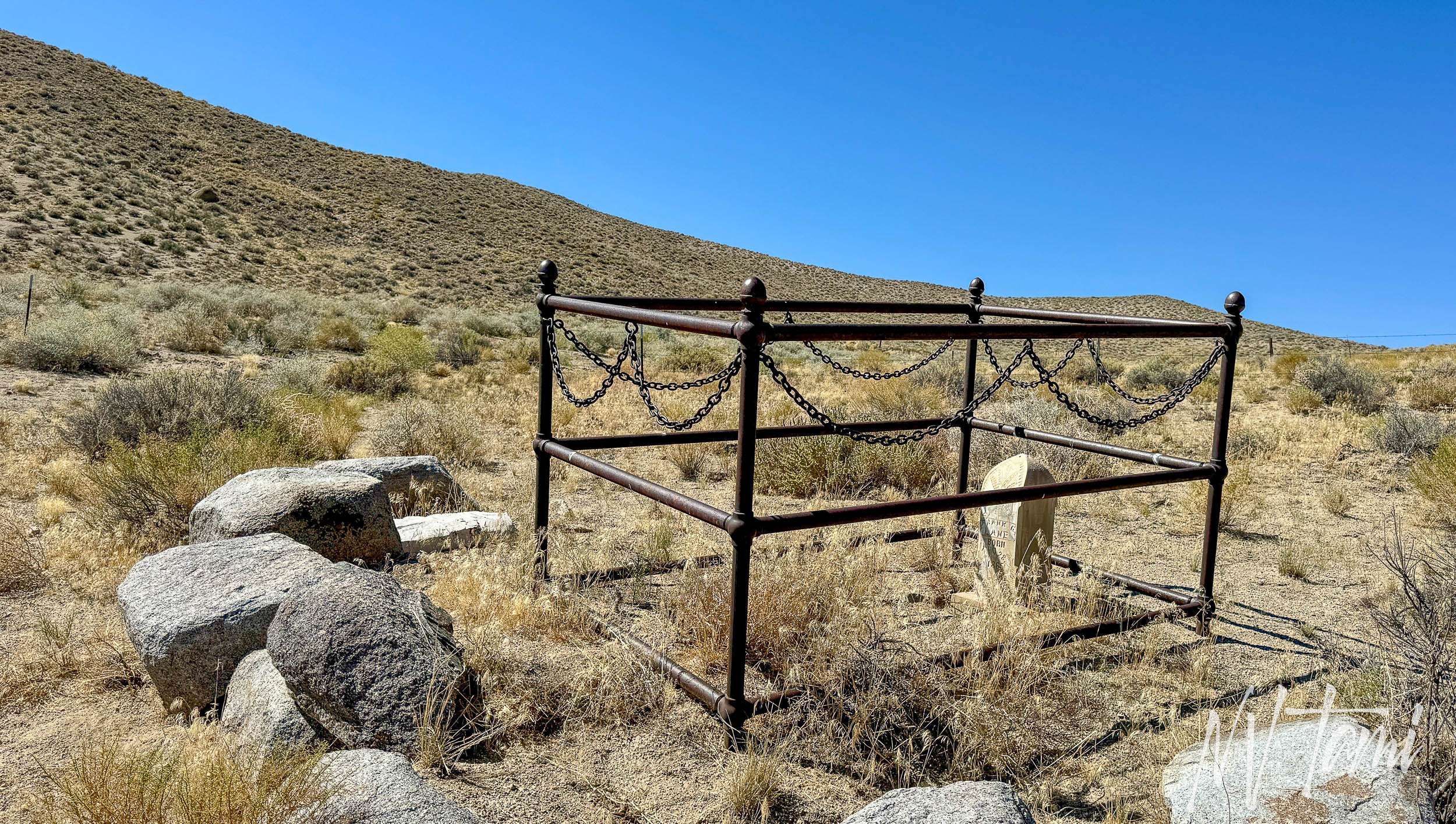
The Lanes shipped a polished Arts & Crafts style headstone and ornate fence via rail from California to Wabuska. Elijah traveled 45 miles to collect the headstone and another 45 miles to Frankie’s grave to place the marker. In the 1930s, thieves stole the headstone. Thankfully, it was located a few miles away, at an abandoned house. The beautiful headstone was returned and once again marks Frankie’s brief life.
The Lane children
C.D. and Anna’s children grew in mining camps across the western United States and Alaska. Three of them spent their lives in the mining industry, and their lives were very different from what it would have been had the family stayed in the isolated Cambridge.
Thomas Lane

(Photo courtesy of the Lane Family)
Thomas attended Santa Clara College. He was the superintendent of the Utica Mine in Angels Camp and later owned the Big Hurrah Mine in Alaska. He died on August 3, 1942, at age 73.
Ila Lane

(Photo courtesy of the Lane Family)
Ila married mining engineer Theophilus Allen. Along with daughters Anita and Mary, they relocated to Gnome, Alaska, where Theophilus worked for Charlie Lanes Wild Goose Mining Company. Eventually, they settled in Palo Alto, California and became founding members of the Palo Alto Christian Science Church.
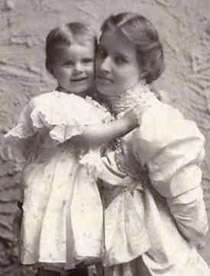
(Photo courtesy of the Lane Family)
Paul Lane

(Photo courtesy of the Lane Family)
Paul married Franc Sterling, and the couple lived in Palisade, Nevada, ranching. In 1909, Paul and his cousin Silas Woodson Hays explored Devil’s Creek near Susitna Station, Alaska. Encountering rapids, their raft broke apart, and both men drowned. Sadly, Paul left a wife and two young children,


(Photo courtesy of the Lane Family)
Louis Leon

(Photo courtesy of the Lane Family)
Louis was born in American Falls, Idaho after his family left Cambridge. He diverted from the other family members’ lifestyles and became an adventurous navigator and sea captain.

(Photo courtesy of the Lane Family)
Cambridge Ruins
The ruins of Cambridge and the mining district are spread along the East Walker River below Pine Grove.
Cabins

A stone cabin overlooks the former site of Cambridge. Next to the cabin is a large dugout, possibly a cellar or dugout foundation. Scattered around the hill are a garbage dump site, a filled-in outhouse foundation, mines and a memorial pile of the town’s remains.
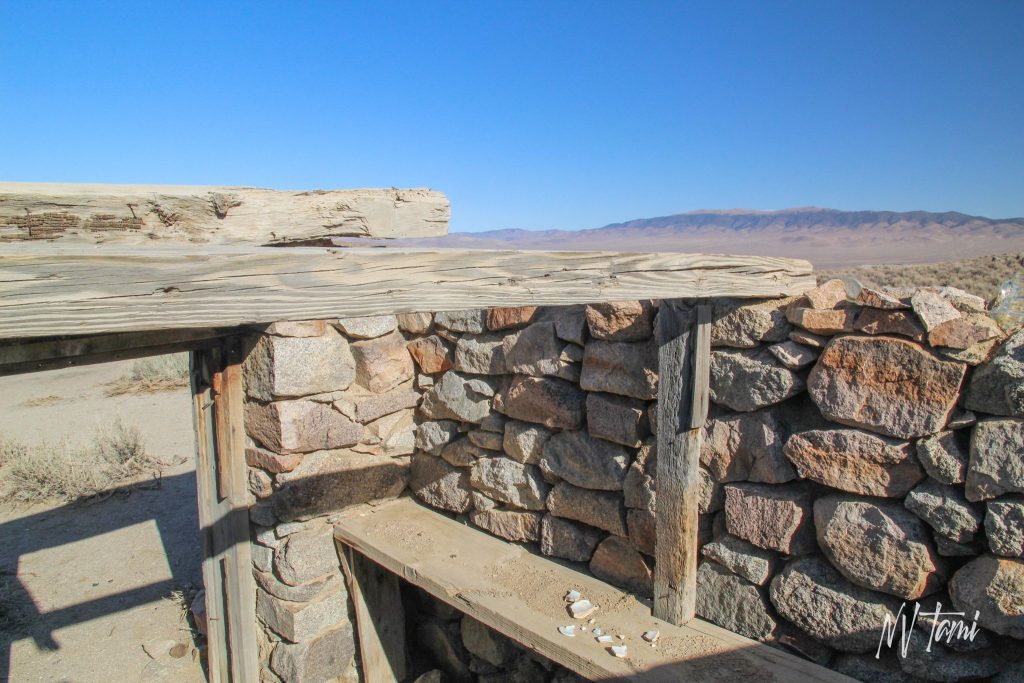
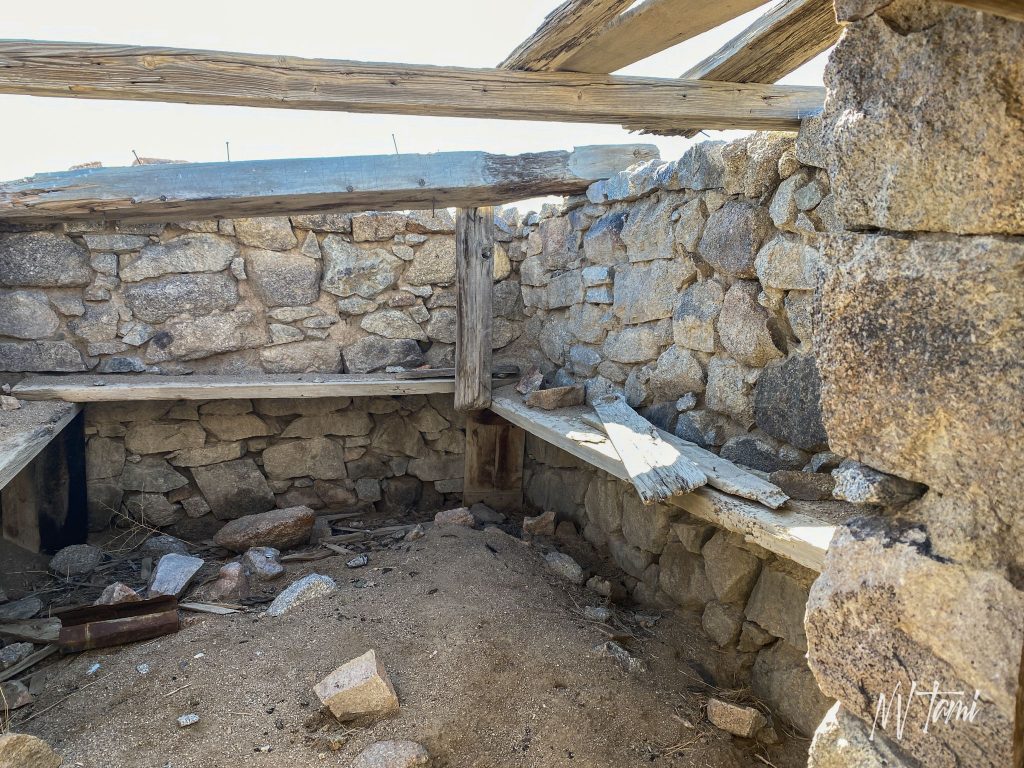
Visitors have gathered artifacts from the site and created a memorial or museum.
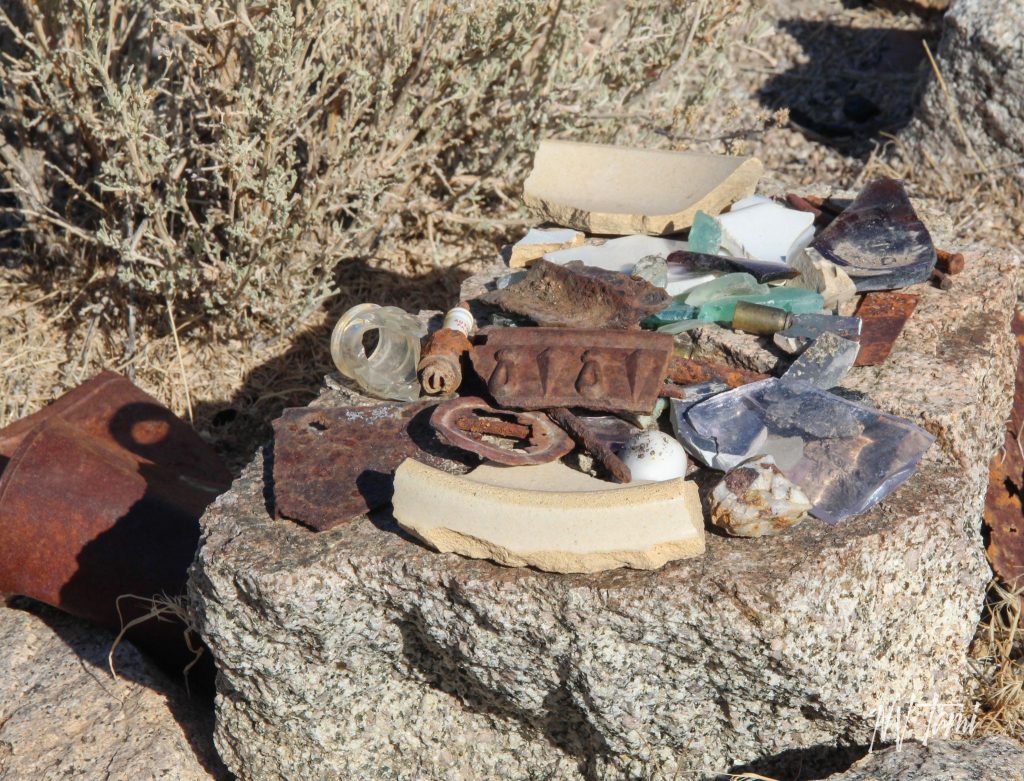
Mill
Multiple mills dot the East Walker Rivera around Cambridge, including a rare Huntington MIll.
Huntington Mill

This rare Huntington mill used rollers to crush ore. It operates similarly to an arrastra but crushes ore on the sides instead of the bottom. The date on the mill is 1886, after the Lane famil moved. The mill was engine-powered.
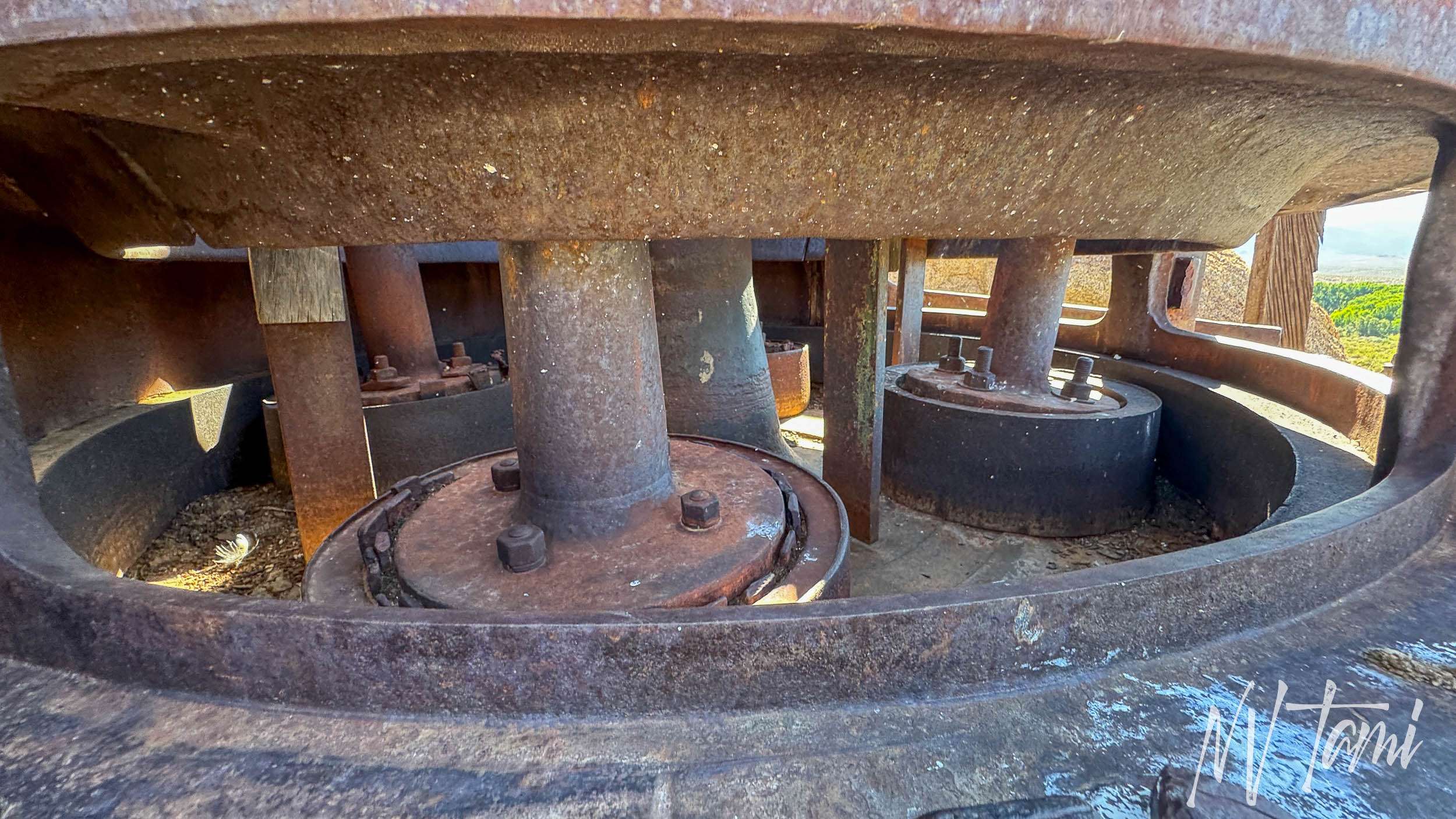

Mill Ruins

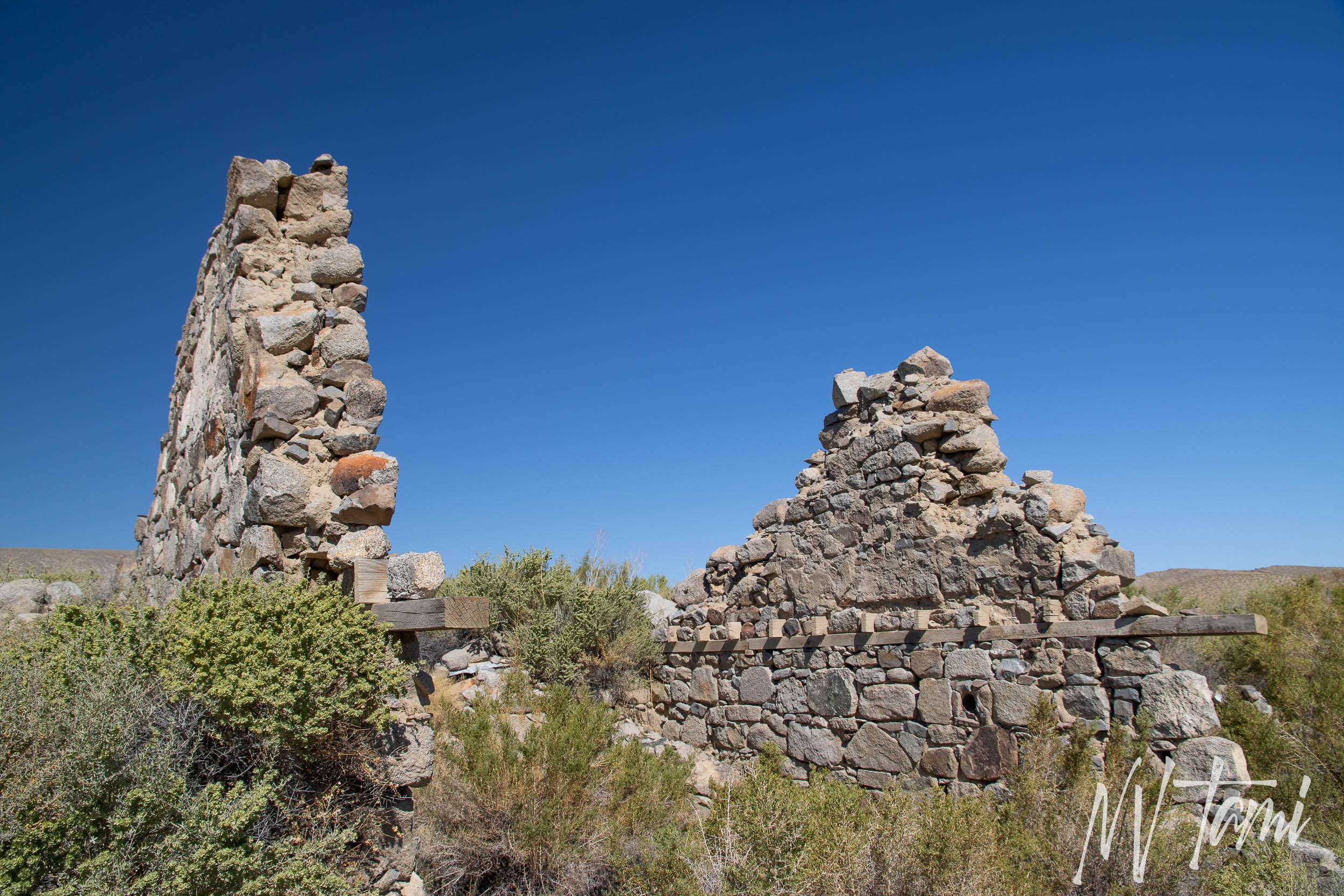
Mill Foundations & Equipment
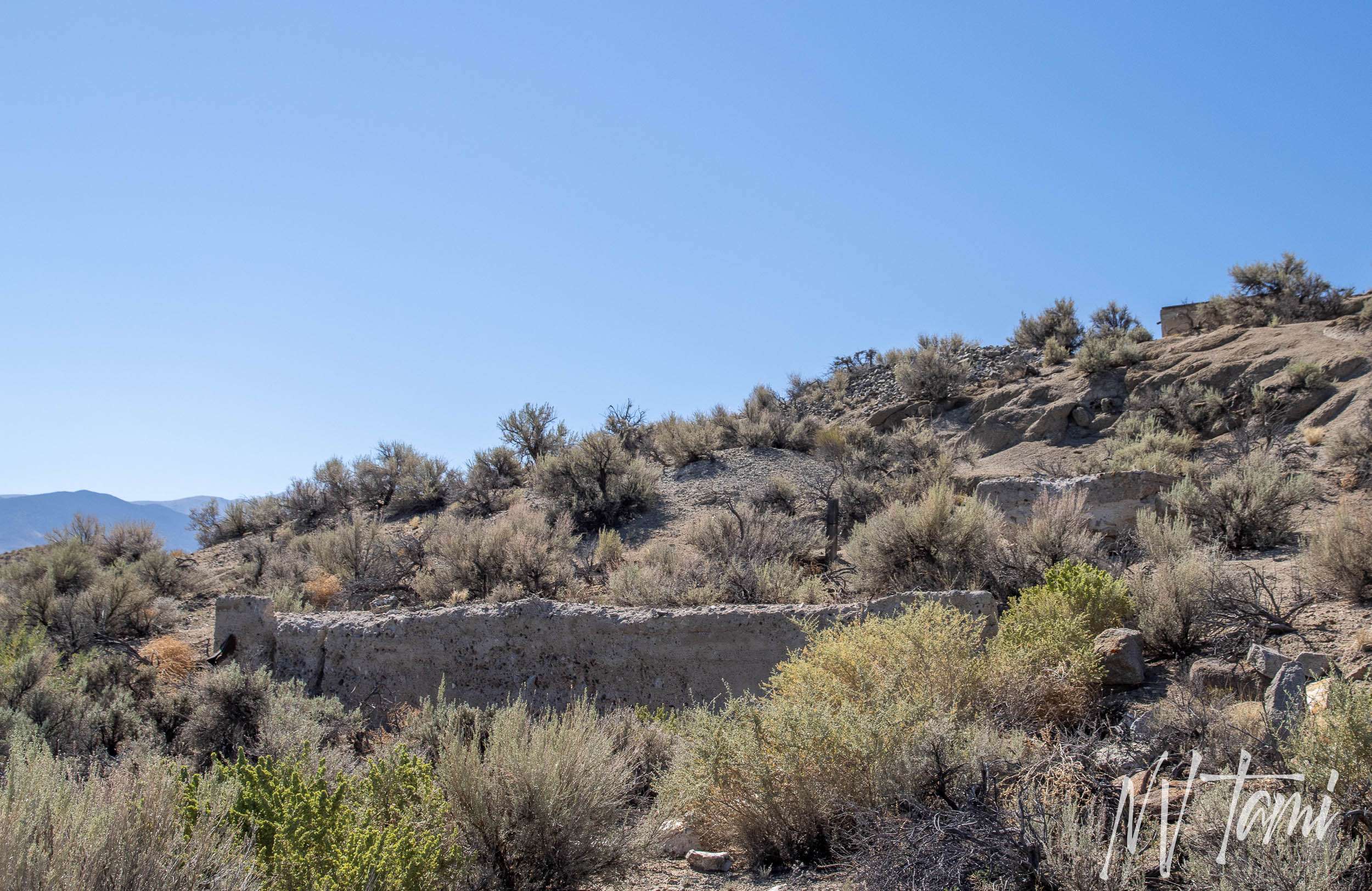
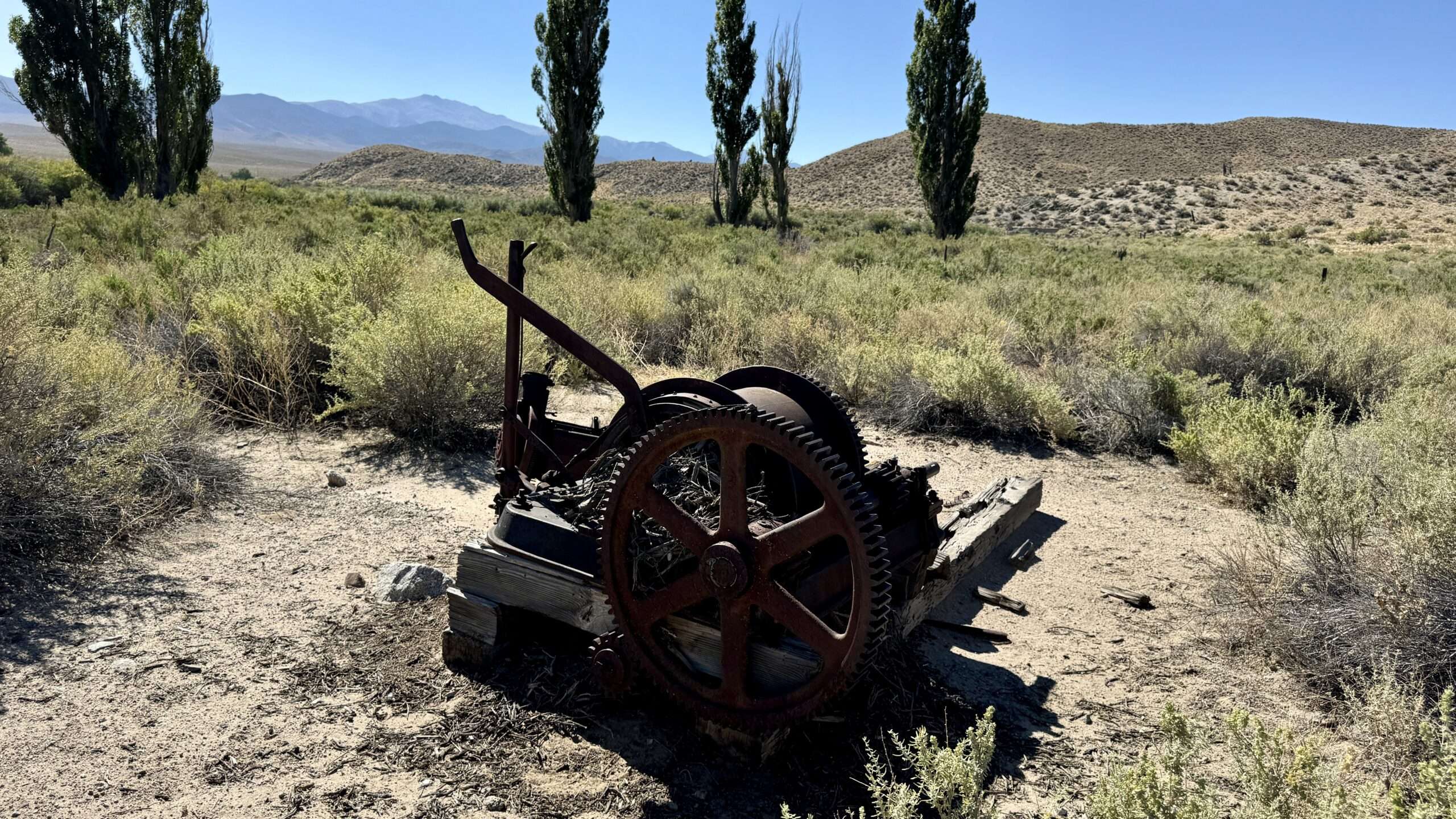
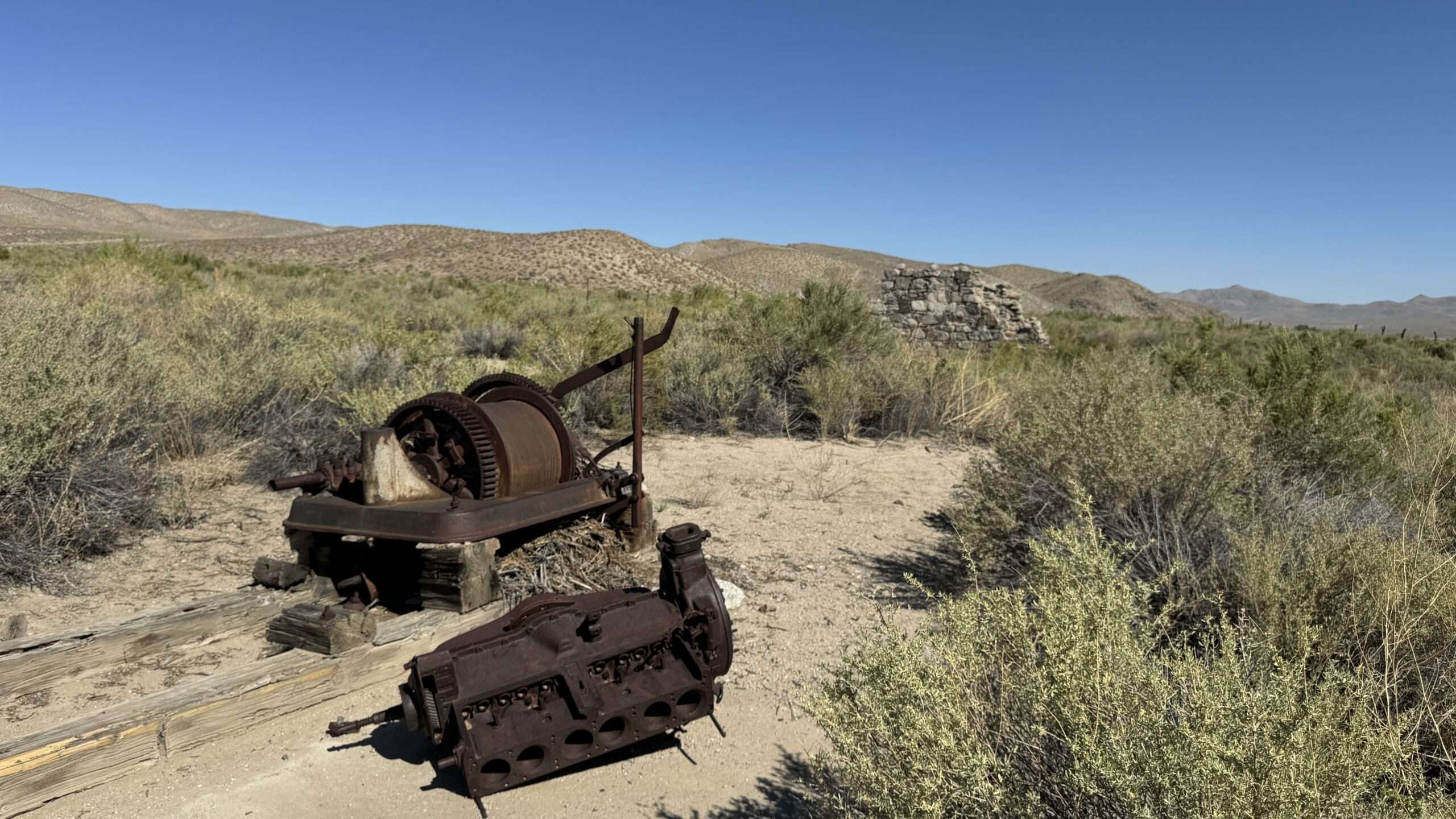
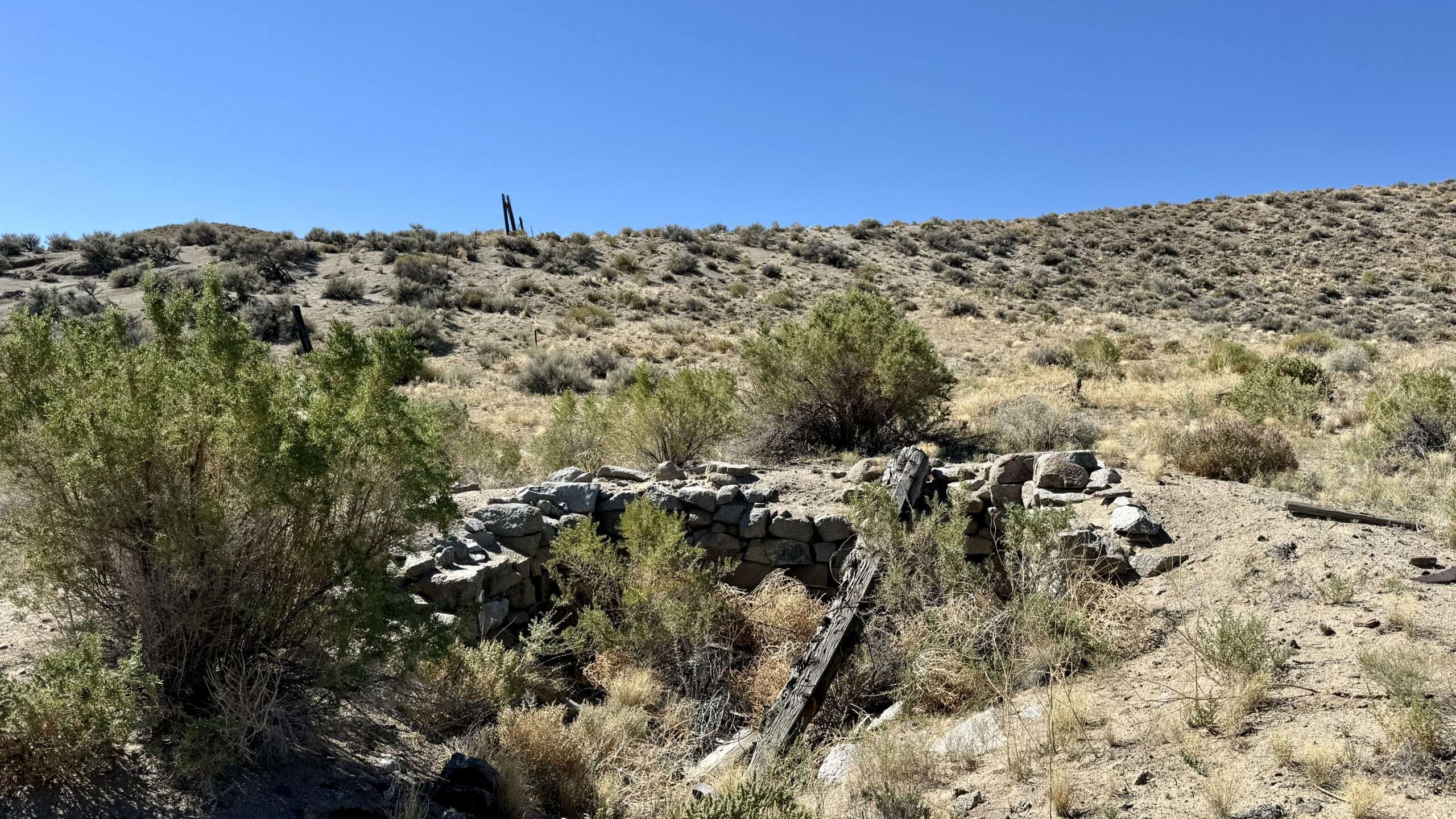
*Authors Note
Governor Harry Blasdel, Nevada’s first governor since gaining statehood, did not move to Nevada until 1861. There are no other Governors with a similar name. Is the report misspelling Blasdel’s name, or are the dates incorrect? Before moving to Nevada, Governor Blasdel lived in Cambridge, Illinois. There is no mention of him mining in Nevada before his move. If Governor Blasdel was an early miner of the area, that could explain the naming of the Cambridge District.
WANT MORE GHOST TOWNS?
For information on more than five hundred ghost towns in Nevada & California, visit the Nevada Ghost Towns Map or a list of Nevada ghost towns.

References
- Calaveras HIstory: Utica Mine
- The Carson Daily Appeal, Sun, Apr 21, 1867 · Page 2
- Fina-a-Grave
- Forgotten Nevada: Cambridge
- Gold Hill Daily News Mon, Oct 28, 1867 · Page 2
- Hoeper, George. LasCalaveras: Charlie Lane Launched Angels Camp Golden Era byLaneIssue0493.pdf
- Lane Family History
- Lincoln, Francis Church. Mining Districts and Mineral Resources of Nevada. Stanley Paher. 1982. Pages 148-149.
- National Governor’s Association: Former Governers Nevada
- Pahler, Stanley. Nevada Ghost Towns and Mining Camps. Nevada Publications, 1970. Page 85.
- Silver Range Resources: Cambridge
- The Silver State, Mon, Apr 06, 1896 · Page 3
- The Silver State, Wednesday, May 31, 1899
- The Silver State, Mon, Apr 15, 1901 · Page 1
- Thompson & West. History of Nevada 1881
- Silver, Sue. Mineral County Nevada: Volume 1 Mining Camps, Towns, Places 1860-1900. Museum Associates of Mineral County, 2011. Page 150.
- Walker Lake Bulletin, Wed, Dec 05, 1883 · Page 2
- Walker Lake Bulletin, Wednesday, September 09, 1891
- Western Mining History: Wilson District
- Wikipedia: Governor Nevada’s Governor Henry Blasdel
- Yerington Times, Sat, Jul 31, 1897 · Page 3
Stephen says
Lovely post
Tami says
Thanks, it is a nice little stop. I wish there was more information on Cambridge, and I’ll keep my ears open.
Rick Olmsted says
Thanks Tami for this Great information. I want to check it out after I buy and move into my new home here in Silver Springs, Nv. I’ll be doing more exploring then. Thanks again, Rick.
Tami says
Congrats on the new house! Silver Springs is a central location to so many ghost towns.
Richard McGrew says
Wow you managed to get a lot of pictures. Interesting story
Tami says
Thanks, it was so nice to update a location where little was known.
Jeanne Howerton says
What a nice piece. Wonderful family photos along with your always great pictures. Really enjoyed this read.
Thank you.
Tami says
Thank you Jeanne! The people part make the story.
John Wrobel says
Thanks Tami, love the follow up on the Lane family children. Makes the story so much more meaningful.
Glad you were able to get permission to access the private property and share the photos.
Tami says
Thanks and I agree, stories of people are what make history. I was fortunate they trusted me with access and information.